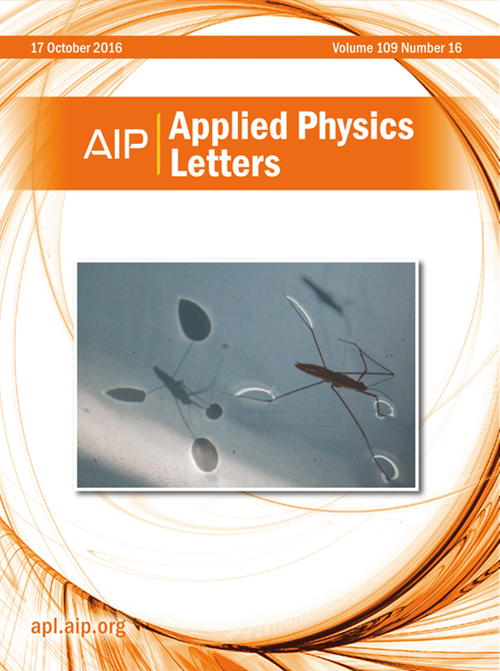Atomic-scale insights into microstructural complexity of van der Waals ferroelectric CuInP2S6
IF 3.5
2区 物理与天体物理
Q2 PHYSICS, APPLIED
引用次数: 0
Abstract
The rapid advancement of technology has positioned devices based on two-dimensional materials as a key solution to overcoming the limitations of traditional semiconductor materials. Among these, the ferroelectric compound CuInP2S6 (CIPS) has attracted significant attention for its multiple ferroelectric polarization states. However, its structural complexity, particularly its susceptibility to copper deficiency, presents notable challenges for further research. This study investigates copper-deficient CIPS (Cu: CIPS) to explore the structure–property relationship between ferroelectricity and structural composition at macroscopic and microscopic levels. Using spherical aberration-corrected scanning transmission electron microscopy, copper deficiency is shown to induce phase separation in CIPS, resulting in the coexistence of CIPS (Cc), CIPS (Cc′) (where the two layers experience a sliding displacement of 1/6b along the b-axis) and an In4/3P2S6 structure containing small amounts of Cu (Cu: IPS) structure. Moreover, the intermediate phase exhibits a lack of ferroelectric switching response in piezoelectric force microscopy measurements. This work elucidates the microstructural evolution of Cu: CIPS, identifies the mechanism underlying the failure of ferroelectric switching in CIPS, and provides valuable insights for advancing CIPS-based ferroelectric memory devices.范德华铁电CuInP2S6微观结构复杂性的原子尺度洞察
技术的快速发展使基于二维材料的器件成为克服传统半导体材料局限性的关键解决方案。其中,铁电化合物CuInP2S6 (CIPS)因其多铁电极化态而备受关注。然而,其结构的复杂性,特别是其对缺铜的敏感性,为进一步的研究提出了显著的挑战。本研究对缺铜CIPS (Cu: CIPS)进行了研究,从宏观和微观层面探讨了铁电性与结构组成之间的结构-性能关系。利用球面像差校正扫描透射电子显微镜,发现缺铜导致了CIPS的相分离,导致CIPS (Cc)、CIPS (Cc′)(两层沿b轴滑动位移为1/6b)和含有少量Cu的In4/3P2S6 (Cu: IPS)结构共存。此外,在压电力显微镜测量中,中间相表现出缺乏铁电开关响应。这项工作阐明了Cu: CIPS的微观结构演变,确定了CIPS中铁电开关失效的机制,为推进基于CIPS的铁电存储器件提供了有价值的见解。
本文章由计算机程序翻译,如有差异,请以英文原文为准。
求助全文
约1分钟内获得全文
求助全文
来源期刊

Applied Physics Letters
物理-物理:应用
CiteScore
6.40
自引率
10.00%
发文量
1821
审稿时长
1.6 months
期刊介绍:
Applied Physics Letters (APL) features concise, up-to-date reports on significant new findings in applied physics. Emphasizing rapid dissemination of key data and new physical insights, APL offers prompt publication of new experimental and theoretical papers reporting applications of physics phenomena to all branches of science, engineering, and modern technology.
In addition to regular articles, the journal also publishes invited Fast Track, Perspectives, and in-depth Editorials which report on cutting-edge areas in applied physics.
APL Perspectives are forward-looking invited letters which highlight recent developments or discoveries. Emphasis is placed on very recent developments, potentially disruptive technologies, open questions and possible solutions. They also include a mini-roadmap detailing where the community should direct efforts in order for the phenomena to be viable for application and the challenges associated with meeting that performance threshold. Perspectives are characterized by personal viewpoints and opinions of recognized experts in the field.
Fast Track articles are invited original research articles that report results that are particularly novel and important or provide a significant advancement in an emerging field. Because of the urgency and scientific importance of the work, the peer review process is accelerated. If, during the review process, it becomes apparent that the paper does not meet the Fast Track criterion, it is returned to a normal track.
 求助内容:
求助内容: 应助结果提醒方式:
应助结果提醒方式:


